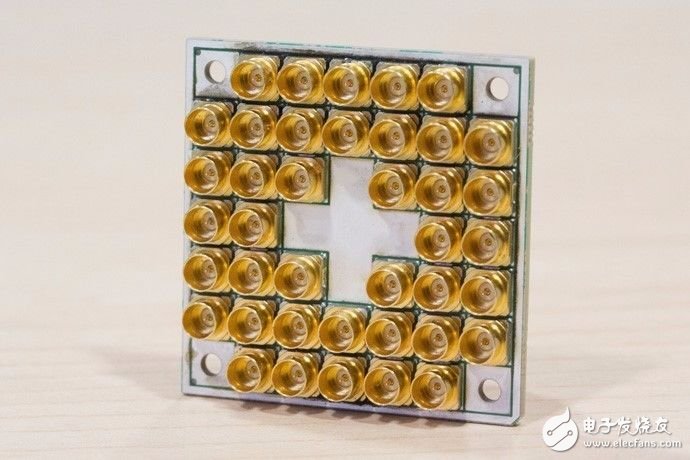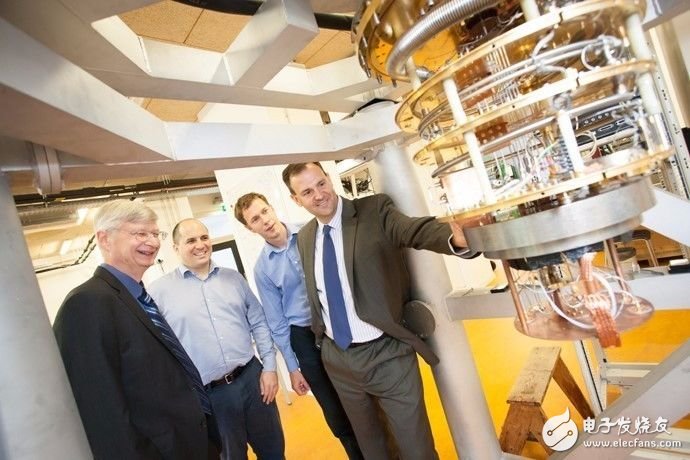Intel recently announced the successful testing of 17 qubits of superconducting computing chips with QuTech, a Dutch research and development partner. This new superconducting computing chip is manufactured by Intel and is uniquely designed to increase throughput and performance. This chip demonstrates the rapid advances that Intel and QuTech have made in researching and developing quantum computing systems. It also highlights the importance of materials science and semiconductor manufacturing in achieving quantum computing. In essence, quantum computing is the ultimate goal of parallel computing, and it has great potential to overcome the difficult problems of traditional computers. Quantum computers can simulate nature to advance research in chemistry, materials science, and molecular modeling. For example, quantum computers can help create a new catalyst to sequester carbon dioxide, develop room temperature superconductors, or discover new drugs. However, despite many experimental results and inferences, there are still many inherent challenges in building a viable, large-scale quantum system that guarantees accurate output. How to make the qubit (the building block of quantum computing) unified and stable is one of the obstacles. Qubits are extremely fragile, and any noise, even unintentional observations, can result in data loss. This vulnerability requires that they must operate at a temperature of 20 millikelvins - 250 times cooler than outer space. This extreme operating environment makes quantum bit packaging the key to determining performance and functionality. The Intel Component Research Group (CR) in Oregon and the Assembly Test and Technology Development (ATTD) team in Arizona continue to break the limits of chip design and packaging technology to address the unique challenges of quantum computing. Intel teamed up with Dutch R&D partner QuTech Successfully tested 17 qubit superconducting computing chips The new 17-qubit test chip is sized for a 25-cent coin (equivalent to RMB 1 coin) and is packaged in a volume of approximately 30mm × 2 mm. Its improved design features include: New architecture: Improves reliability, thermal performance and reduces radio frequency (RF) interference between qubits. Scalable interconnection solution: The chip's output input signal capability is increased by 10-100 times compared to the chip wire bonding method . Advanced processes , materials and design: Allows Intel packages to scale for quantum integrated circuits to accommodate quantum integrated circuits that are much larger than traditional chips. Michael Mayberry, Intel’s vice president and president of Intel Research, said: Our quantum research has evolved to develop quantum test chips based on leading process technologies, simulating quantum algorithm loads through our partner QuTech. Intel's expertise in manufacturing, controlling electronics and architecture sets us apart. From neuron computing to quantum computing, we are pioneering new computing models. Since 2015, Intel's collaboration with academic partner QuTech has accelerated the progress of quantum computing. Since then, the collaboration between the two companies has set a milestone - from demonstrating key circuit blocks that integrate low-temperature CMOS control systems to developing spin-quantum manufacturing processes on Intel's 300mm process technology, to superconductivity Quantum bits develop unique packaging solutions. This collaboration has greatly shortened the entire cycle from design to manufacturing to testing. Professor Leo DiCarlo from QuTech said: With this test chip, we will focus on connecting, controlling, and measuring multiple entangled qubits to achieve an error correction scheme and logic qubits. This work will give us more updated insights into quantum computing to shape the next stage of development. Intel collaborates with academic partner QuTech Advancing the development of quantum computing and Moore's Law Advance quantum computing systems: Intel and QuTech's collaboration in quantum computing goes far beyond the development and testing of superconducting qubit devices. The collaboration between the two covers the entire quantum system—or “stackâ€â€”from quantum bit devices to the hardware and software architecture needed to control these devices and quantum applications. All of these elements play a crucial role in the process of transforming quantum computing from research and development to reality. In addition, unlike other vendors, Intel is studying a variety of qubit types. These include superconducting qubits incorporated into this latest test chip, and an alternative type of spin qubit in silicon. These spin qubits are similar to an electronic transistor and are in many ways very close to conventional transistors and are likely to be fabricated by similar processes. Although quantum computers are expected to solve some problems with higher efficiency and performance, they do not completely replace other emerging technologies such as traditional computing or neuromorphic computing. We need the technological advances brought by Moore's Law to invent and exploit these emerging technologies. Intel's investment is not only to invent new ways of computing, but also to advance the development of Moore's Law, making everything possible in the future. Large Servo Drives,Digital Ac Servo Driver,Variable Frequency Drives,Full Closed Loop Servo Driver Zhejiang Synmot Electrical Technology Co., Ltd , https://www.synmot-electrical.com
